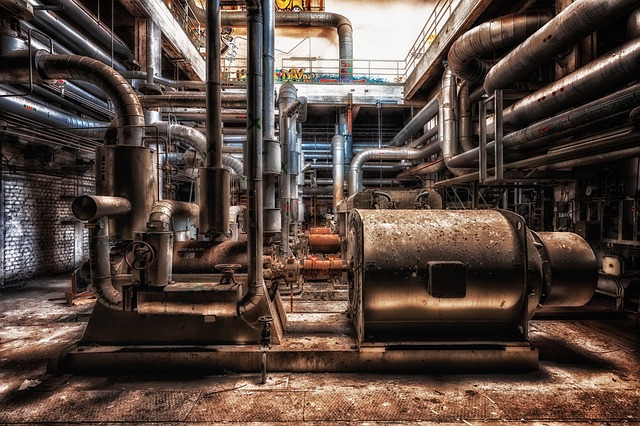Table of Contents
This article delves into the evolution of industrial machinery, tracing its impact from early mechanization to modern technological advancements.
• The Dawn of Industrial Machinery
The Industrial Revolution began in the late 18th century with the invention of steam engines by James Watt. These engines increased production capabilities, revolutionizing the textile industry with mechanized looms and spinning machines. This shift from artisan workshops to mass production in factories and transportation advancements like railways and steamships further accelerated industrialization. Early machines were labor-intensive but set the stage for future innovations.
• The Rise of Assembly Lines
The assembly line, popularized by Henry Ford in the early 20th century, revolutionized industrial machinery by breaking down production processes into smaller, repetitive tasks. This reduced production time and costs, allowing workers to specialize in specific tasks, enhancing efficiency and output. This innovation changed manufacturing, labor practices, management theories, and economic structures, paving the way for the modern industrial landscape.
• The Advent of Computer Numerical Control (CNC)
The introduction of Computer Numerical Control (CNC) in the mid-20th century marked a new era in industrial machinery. CNC machines use computers to control the movement of tools and machinery, allowing for unprecedented precision and complexity. Engineers could now design intricate components with exact specifications, leading to advancements in industries such as aerospace, automotive, and electronics. CNC technology reduced the need for manual intervention, increasing production speed and reducing human error. This technology also facilitated the development of automated processes, which enhanced productivity and consistency. The impact of CNC machines can be seen in the high-quality, precision-engineered products available today, which would have been impossible to achieve with traditional manual machining techniques.
• Automation and Robotics
The introduction of automation and robotics in the latter half of the 20th century further revolutionized industrial machinery. Robots took over repetitive, dangerous, and precise tasks, enhancing safety and efficiency. Automation systems streamlined operations, reducing the need for human intervention and increasing production rates. These technologies penetrated various industries, from manufacturing and logistics to healthcare and food processing. Industrial robots can work continuously without fatigue, improving output and consistency. Automation and robotics also facilitated the emergence of advanced manufacturing techniques such as 3D printing and smart factories, where interconnected systems enable real-time monitoring and optimization. These advancements have reshaped industries, reducing costs, improving quality, and enabling the creation of innovative products and services.
• The Role of Artificial Intelligence and Machine Learning
Artificial Intelligence (AI) and Machine Learning (ML) have emerged as key players in the latest wave of industrial innovations. AI and ML algorithms analyze large volumes of data to optimize manufacturing processes, predict maintenance needs, and improve quality control. Smart sensors and Internet of Things (IoT) devices collect data from machines, creating a network of interconnected systems that enhance efficiency and responsiveness. AI-driven systems can detect patterns and anomalies, enabling predictive maintenance that reduces downtime and costs. Machine learning models improve over time, continuously refining processes and enhancing productivity. These technologies have transformed manufacturing into a more agile and intelligent industry, capable of adapting to changing demands and minimizing waste.
• Sustainable Industrial Innovations
In recent years, there has been a growing emphasis on sustainability in industrial innovations. The development of eco-friendly machinery and processes aims to reduce the environmental impact of manufacturing activities. Advanced materials and energy-efficient technologies help minimize resource consumption and emissions. Renewable energy sources, such as solar and wind, are increasingly integrated into industrial operations. Innovations in recycling and waste management enable circular economy practices, where materials are reused and repurposed. Sustainable industrial innovations not only address environmental concerns but also offer economic benefits, including cost savings and compliance with regulations. As industries continue to evolve, the focus on sustainability will play a crucial role in shaping the future of industrial machinery and practices.
• Conclusion
The journey of industrial machinery from simple mechanization to advanced technologies has been transformative. Each innovation, from steam engines to AI-driven systems, has revolutionized industries, enhancing efficiency, productivity, and quality. The assembly line enabled mass production, while CNC machines introduced precision. Automation and robotics improved safety and output, and AI and machine learning optimized processes. The emphasis on sustainability is driving the development of eco-friendly innovations, ensuring a balance between industrial growth and environmental responsibility. These advancements have not only changed manufacturing but also impacted economies, labor practices, and societies. As we move forward, the continuous evolution of industrial machinery will likely bring even more groundbreaking changes, shaping the future of industries in ways we can only begin to imagine.
